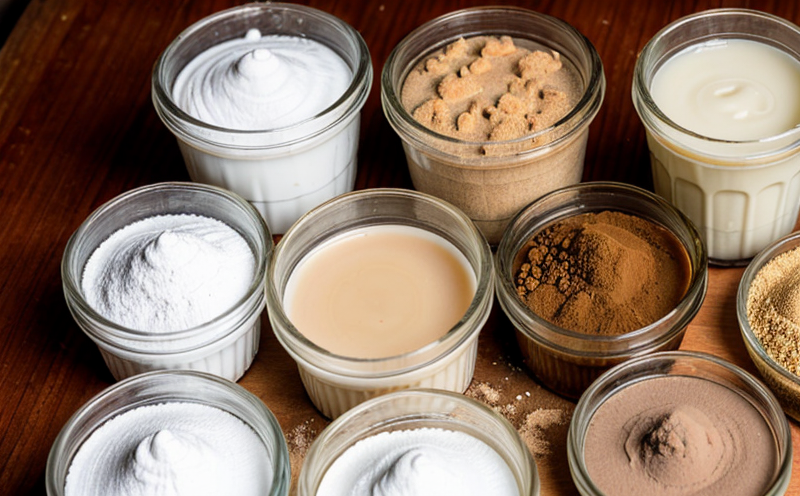FDA BAM Chapter 19 Detection of Spoilage Yeasts in Fresh Produce
The FDA Bacteriological Analytical Manual (BAM) Chapter 19 is a critical guideline for detecting spoilage yeasts in fresh produce. This method ensures that food safety standards are met, preventing the spread of contamination and protecting public health.
Yeast and mold can significantly impact the quality and shelf life of fresh produce. FDA BAM Chapter 19 provides detailed procedures to identify these microorganisms using advanced microbiological methods. The process involves collecting samples from various parts of the produce, preparing them for analysis, inoculating culture media, incubating cultures under specific conditions, and identifying the yeasts based on colony morphology.
This testing protocol is essential in maintaining compliance with food safety regulations and ensuring product quality. By following FDA BAM Chapter 19, laboratories can offer reliable results that help stakeholders make informed decisions regarding fresh produce handling and distribution.
Let's delve into the specifics of this method. The initial step involves selecting appropriate sampling locations on the produce to ensure representative samples are collected. Properly preparing these samples requires careful aseptic techniques to avoid contamination. Inoculation onto specialized media allows for growth and differentiation of potential spoilage yeasts.
Incubation conditions vary depending on the type of yeast being targeted; however, most methods require incubation at temperatures between 25°C and 30°C. After a suitable incubation period (typically 48 hours), colonies are examined for characteristics indicative of spoilage yeasts such as color, texture, and growth patterns.
The identification process may further involve microscopic examination or biochemical tests to confirm the presence of specific species known to cause spoilage in fresh produce. This level of detail ensures accurate detection and differentiation from other microorganisms which might not pose similar risks.
Understanding FDA BAM Chapter 19's importance extends beyond just laboratory operations; it plays a pivotal role in ensuring food safety across the entire supply chain—from farm to fork. Compliance with this chapter helps protect consumers by reducing the risk of consuming contaminated products that could lead to adverse health outcomes.
For quality managers and compliance officers, understanding how FDA BAM Chapter 19 integrates into broader food safety initiatives is crucial. It serves as a cornerstone for ensuring fresh produce meets stringent microbial standards set forth by regulatory bodies like the FDA. Similarly, R&D engineers can leverage insights gained from this testing to develop new preservation techniques or reformulate products to extend shelf life while maintaining freshness.
Why It Matters
The detection and control of spoilage yeasts in fresh produce are critical aspects of food safety. Yeasts, particularly those that thrive on fruits and vegetables, can compromise product quality by causing off-flavors, discoloration, and texture changes. These factors not only affect consumer satisfaction but also pose significant economic challenges for producers and retailers.
Compliance with FDA BAM Chapter 19 is mandatory to prevent contamination and ensure that fresh produce reaches consumers in optimal condition. Non-compliance can lead to recalls, legal actions, and damage to brand reputation. Implementing rigorous testing protocols like those outlined in this chapter helps maintain industry standards and fosters trust among stakeholders.
From a regulatory perspective, adherence ensures consistency with international guidelines such as ISO 14025 for environmental labeling and ISO/IEC 17025 for laboratory accreditation. By aligning internal practices with these external frameworks, businesses demonstrate their commitment to excellence in food safety management.
For procurement teams responsible for sourcing high-quality ingredients, verifying compliance with FDA BAM Chapter 19 adds another layer of assurance that suppliers adhere to best practices. This enhances the overall integrity of supply chains and supports sustainable business operations.
In summary, the importance of FDA BAM Chapter 19 lies in its ability to safeguard public health by minimizing risks associated with microbial spoilage in fresh produce. Its rigorous approach fosters trust within the industry while driving continuous improvement towards safer food products.
Industry Applications
| Application | Description |
|---|---|
| Fresh Produce Handling and Distribution | This application focuses on the early detection of spoilage yeasts during handling and distribution processes. By implementing FDA BAM Chapter 19, facilities can monitor microbiological quality throughout the supply chain to ensure compliance with food safety standards. |
| Retailer Quality Control | Retailers use this method as part of their internal quality control measures. It helps them maintain product integrity by identifying potential issues before they become significant problems leading to customer dissatisfaction or health concerns. |
| Application | Description |
|---|---|
| Consumer Product Safety Assurance | This application emphasizes the role of FDA BAM Chapter 19 in safeguarding consumer health. By detecting spoilage yeasts early, manufacturers and distributors can prevent the distribution of potentially harmful products. |
| Supply Chain Integrity | Adhering to this chapter strengthens supply chain integrity by ensuring that all parties involved in fresh produce handling follow consistent, high-quality standards. This promotes trust and reliability across the entire ecosystem. |
Why Choose This Test
The FDA BAM Chapter 19 Detection of Spoilage Yeasts in Fresh Produce offers several advantages that make it an ideal choice for laboratories and food safety professionals:
Accurate Identification: Using advanced microbiological techniques, this method provides precise identification of spoilage yeasts, enabling accurate diagnosis of contamination issues.
Comprehensive Coverage: The protocol covers a wide range of fresh produce types, ensuring thorough coverage across various products. This versatility makes it suitable for diverse applications within the industry.
Regulatory Compliance: By aligning with FDA BAM Chapter 19 requirements, laboratories ensure that their testing practices meet stringent regulatory standards, thereby enhancing credibility and reliability.
Safety Assurance: Early detection of spoilage yeasts helps prevent the spread of contamination, protecting both consumers' health and businesses' reputations.
Economic Benefits: Implementing robust testing protocols reduces the likelihood of costly recalls, damaged inventory, and lost sales due to compromised product quality.
Sustainability: Ensuring fresh produce meets strict microbial safety standards contributes positively to environmental sustainability by minimizing waste and promoting responsible resource use throughout the supply chain.





